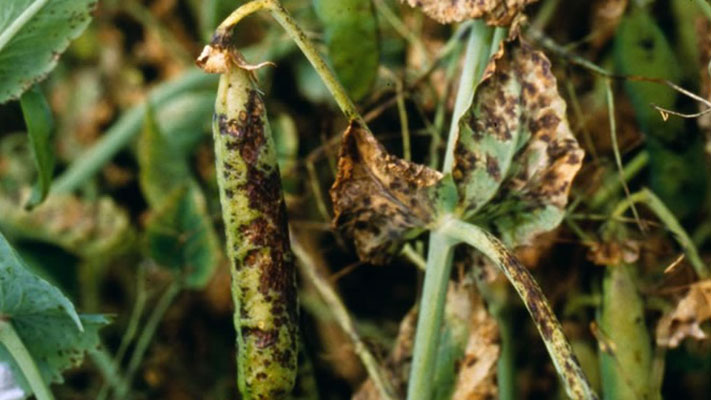Black spot - Grapes
Refer to links below for more information on black spot in other crops.

Description
Small (1-3 mm) dark brown to black round lesions appear on leaves, eventually a hole develops at the lesion site appearing like a ‘shot hole’, and infected leaves appear distorted. Shoots develop white to grey lesions with a defined dark margin and severe infections can cause the shoot to break or prevent bunches forming.
Small, brown sunken spots develop on fruit, later developing into lesions with grey centres and dark red margins. Severely affected immature fruit is either shed or remains attached as shrivelled mummies. Major crop losses can occur from severe infections, particularly when inoculum levels are highest after reoccurring wet spring conditions.
Black spot survives as sclerotia in stem cankers from the previous year’s infection, and spores can remain in cankers for 3-5 years. Spring rainfall spreads spores onto young leaves and shoots which are most commonly infected. For infection to occur, foliage needs to remain wet for greater than two hours.
Control
It is vital to reduce overwintering lesions to prevent the build-up of black spot. Infected leaves, shoots and mummied fruit clusters should be removed and destroyed.Vineyards known to have black spot should be monitored early in the season. In addition, planting resistant varieties may help control where black spot is an issue.
A preventative approach to control is important when black spot is known to be present, as young leaves and shoots are susceptible. Early season application of a fungicide at budburst followed by another 10-14 days later is suggested.
References
CABI (Viewed Oct 2019), ‘Grape Anthracnose’ Plantwise knowledge bank, CABI, https://www.plantwise.org/knowledgebank/datasheet/20773#PreventionAndControlSectionTaylor, A and Gordon, C (2019), ‘ Black spot of grapevines in Western Australia’, Department of Primary Industries and Regional Development (DPIRD), https://www.agric.wa.gov.au/spring/black-spot-grapevines-western-australia?page=0%2C1
Whiting, J (2010), ‘Black spot of grapevines’, Agriculture Victoria, Department of Environment and Primary Industries VIC, http://agriculture.vic.gov.au/agriculture/pests-diseases-and-weeds/plant-diseases/grapevines/black-spot-of-grapevines





